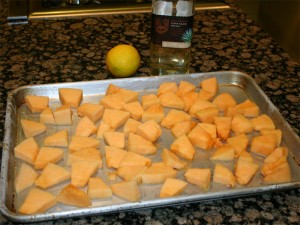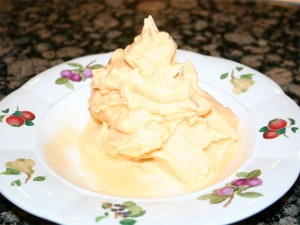Here is another characteristic of Your Being that you may take for granted; visualization! How visions are formed is a direct reflection between who you are and what you’ve experienced (or going to experience).
Yet, before we really get into this posting, I would encourage you to review a couple posting that are very similar. They are Input & Output – Perceiving and Creating and Intuition & Ego. The only real difference here is that we’ll be investigating vision and a bit about how that personal tool works.
Everyone knows that when light reflects off something it can be seen. The sensing process takes place with the eyes. The general process has been outlined fairly well on Wikipedia under Visual Perception:
The visual system in humans allows individuals to assimilate information from the environment. The act of seeing starts when the lens of the eye focuses an image of its surroundings onto a light-sensitive membrane in the back of the eye, called the retina. The retina is actually part of the brain that is isolated to serve as a transducer[citation needed] for the conversion of patterns of light into neuronal signals. The lens of the eye focuses light on the photoreceptive cells of the retina, which detect the photons of light and respond by producing neural impulses. These signals are processed in a hierarchical fashion by different parts of the brain, from the retina upstream to central ganglia in the brain.
This first part of the definition of Visual Perception really only seems to cover the mechanics of how the body receives the light – the sensory side of things. Sure, that photon of light gets converted from one form of energy into another as it enters the body, but how do we actually see? Where is the perception based on that collection of photons?
If you follow the link on Wikipedia to Perception, we read:
Perception (from the Latin perceptio, percipio) is the process of attaining awareness or understanding of the environment by organizing and interpreting sensory information.[1][2]
So, the perception part would be tied in with the understanding that we get from the visual sensory information. This would imply that there is action involved (on our part) with regards to being aware of what is seen rather than simply seeing it.
This kind makes sense when you think about the philosophical idea that when two people look at the same painting, they see to different things (stories, impressions, etc.). Basically, if you show two different people the exact same item (painting, photo or something else fairly large in visual imagery) they will ‘see’ different things in the picture. When you look closer at how the person actually goes about ‘seeing’ what is in that picture, what gets seen is what the person’s awareness is focused on. As the person’s awareness moves from one area of the picture (image) to another, they become consciously aware of what is in this new area.
So, even though light enters the eyes, the only thing that is ‘seen’ is what you are aware of.
This reminds me of adventures that I’ve had froggin’. At different points in my life I’ve had time to walk streams (or ponds) in order to spot frogs. There have been many times when I’ve stood (or squatted) at the water’s edge and intently looked for frogs with no success. I would thoroughly look over every spot where a frog might sit (or hide) and not see anything – until the frog moved! It is amazing how well (and long) a frog can remain outside of someone’s awareness. They can be sitting right in front of you and you just can’t see it. Even after it moves, if you take your eyes off it, that frog has the magic of blending which can make it really hard to continually remain aware if it’s location.
So even though are light organ (eyes) receives light, it is what our Being is aware of that determines if we actually see it or not.
This gets really interesting when you close your eyes and still experience ‘seeing’ things. How is it that we can get the sense of seeing when we’re not receiving light directly thorough our eyes?
The first thing that would come to mind is that you remember the image. This idea is based upon memory. You simply remember what it looked like. The concept here is that at the moment you remember the image, you are once again bringing your awareness to that experience. This is a situation where, in your mind (where ever that may be) your awareness explores the details of the image a second time.
It would seem that if this is the case – people have the ability to remember an image – it might imply that the light from the original experience becomes part of us. It’s like we eat photons! As we see, that light enters the body and gets stored. This might be more supporting data for the fact that we are light Beings (maybe see Living on Sunlight and the referenced postings). Or, maybe, it’s not the light that is stored, but rather the experience – as part of your awareness. The light was used as a tool so that your awareness could grow.
The end result of taking in all this light really has little to do with the act of visualization. The process of visualizing something is very similar to the process of intuiting something. Visualization is a direct exchange of information from Your Being into the physical world. It is the same whether you’re remembering something or visualizing something.
Maybe a simple exercise could help.
Sense we know that in order to ‘see’ something we have to bring our awareness to it, we’ll want to do just that. What I’ve found is that there are different types of sensual stimulation that overpowers the subtle energies so you have to make a conscious effort to ‘remove the noise’. Thus, I’ve found a technique during meditation that works pretty good for me right now. It goes like this.
Assume a meditative posture (this is one of the key reasons why I do yoga). You want to be sitting, maybe cross-legged or in a chair, but the most important part is that you have to be able to completely relax. I sit in Easy Pose. Some days I’ll turn my palms up, other days I’ll cup my knees. But, like I said earlier, the key thing is to be able to get relaxed. This only really happens when you have a straight vertical spine. Now close your eyes and then breathe slow and steady. Your breathing should fill your lungs but only to the point just before you feel the muscles tense up. Now breathe for a while.
During this breathing time where you make a conscious effort to remain completely relaxed, you should feel a change in energy. Or, said differently (and maybe a little more accurately), the energy that you normally use to sense everything on a daily basis is no longer needed and your awareness can expand beyond it’s normal ‘confines’. That is, if you no longer place energy into using your eyes, your sense of hearing becomes heightened. If you no longer place energy into moving your muscles, that energy doesn’t ‘cloud the pond’ so to speak allowing your awareness to explore other subtle energies.
After a little time, you’ll notice that you’re doing the right thing when you start becoming aware of things that you previously didn’t sense. An example might be that when you first start your meditation, you were aware of your posture and breathing. Yet, after a while, the sound of the birds chirping outside resonate loud and clear. Before you got into this relaxed state you had no idea about the birds playing outside, yet after minimizing the dominate energies that rule your life, the sounds they make come to the foreground and grab your attention.
It is at this point where visualizations become easy. It is at this point where you’ve calmed the energy that you emit to the point where subtle energies can be recognized. In other words, it’s like once you’ve removed the energy that creates big waves in a pond, you’re able to see the little waves. (Or when you remove the waves you make you can detect the waves others make.)
The next step is that you have to set an intention for the visualization. If you want to remember something, you have to ‘want’ to remember it. You have to have some type of desire to kick start the communication. For me, this is the point where I use the translator in my head to help drive the experience – yet only in a limited fashion for the energy used by the ego is a crude noisy energy that can create ‘larger waves in the pond.’ Thus, you ask, and then clean the slate so the visualization can occur. Said differently, you make room for your awareness to go to a previous experience and feel it again. Or, you make room for Your Being to share energies about what will be. In either case, if you’re in the state where you’re not putting out much energy (you’re calm) you won’t blow away the imaging that Your Being experiences.
What you might find is that this exercise is very similar to dreaming. But it is a conscious dream where you can either manipulate it or simply experience it. When you relate this to dreaming, Your Being shares visualizations with you in some type of sequence and, at some point, you become conscious that you’re dreaming. At that point, you can either let the dream continue uninterrupted or you might replay it slightly differently if you didn’t like the way it was playing out. In the dream, the visions that you have up to the point of conscious manipulation are an unaltered communication from Your Being. At and after the point of manipulation the dream is a creation influenced by the ego.
Regardless to whether you spend time visualizing or remembering, the art of getting to the point where this can happen is the same and the act of doing it is a matter of bring your awareness to that experience or desire.
After all this, the question should arise, why is this important?
Because time is immaterial to Your Being!
What does that have to do with the price of tea in China? Well, when you visualize something it may or may not have actually occurred. If it did occur, it’s a memory. If it has not occurred, it’s a projection. In either case, the visualization energy can stimulate a physical response allowing you to relive the feeling of a past experience or allow you to generate feelings for a future experience! The energy that generates a physical response is the energy that will fulfill your desire.
That’s right. You can visualize events that you want to experience. When your visualizations generate an emotional or physical response, you know that the experience is strong. The stronger the energy that you use for projection, the more likely (or faster) that experience will become reality.
Your inner sight is a wonderful tool that you have to relive previous experiences or shape new ones. This sight is a direct link between Your Being and your physical experiences. If you remove the noise of everyday life, you will see that your awareness can be brought to this aspect of Your Being so as to enrich your experiences and relive treasured emotional experiences.


